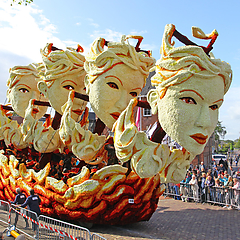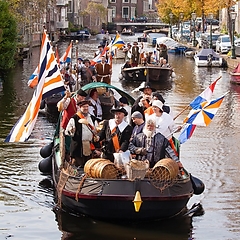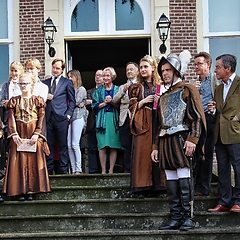The midwinter horn is a large, slightly bent, wooden horn with a length of 4 to 5 feet. The horns are either glued together (dry horn) or hung in water, making the two halves swell and seamlessly fit onto each other, while hermetically closing the joints (wet horn). A removable mouthpiece is added, the hap, made of elder wood. It is a real winter tradition, as the horn is blown as of the first Advent Sunday, to announce the birth of Jesus. At Epiphany, on January 6, the final sounds are blown and the horns are put away again. There is a kind of standard for the melody, in Twente dialect called (the old call), in Achterhoek dialect it is called d’olde roop en on the Veluwe people say de olde rôep. Moreover various neighbourhoods and regions know their own melodies. Most of the time they are monotonous melodies, sometimes blown above a well to amplify the sound. Six natural tones can be blown with a midwinter horn, by adjusting the tension on the lips. The midwinter horn is always blown solo and the sound is a plaintive, melancholic tone that can be heard 4 or 5 miles away. The fact that it is usually blown at twilight, contributes to the mystical atmosphere that is associated with the midwinter horn.



